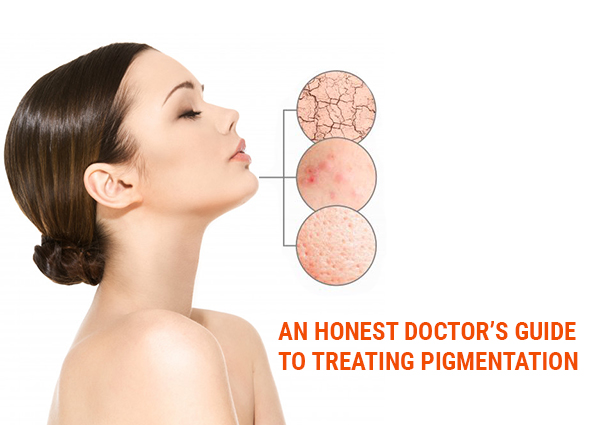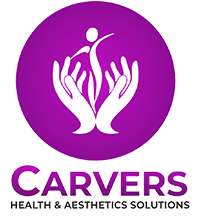An Honest Doctor’s Guide To Treating Pigmentation

An Honest Doctor’s Guide To Treating Pigmentation
In the following article we are going to discuss about an important topic that is “An Honest Doctor’s Guide to Treating Pigmentation” and will discuss about it thoroughly within the article:
What Is Pigmentation, And What Causes Pigmentation?
Pigmentation is actually caused by the production of melanin in our skin. The darker the colour of our skin, the more pigment there is in our skin. Melanin is produced in our skin by cells called melanocytes. These melanocytes contain melanosomes which produces and stores melanin.
Hormones, particularly female hormones, play a part in pigmentation formation. (Fact: Women are actually three times more likely to actually suffer from pigmentation than men. It is more common in women during or after pregnancy, or after menopause.)
Genetic – A family history of pigmentation actually even increases the chances of one really having these issues. The most common genetic conditions would be freckles or sun spots. There are also birthmarks – i.e. pigmentation present at birth.
Some of the medical condition as well as medication may even cause pigmentation formation, or increased sensitivity to it.
What Type Of Pigmentation Do I Have?
In general, there are actually 2 main categories of pigmentation; epidermal (first layer of the skin) as well as dermal (second layer) pigmentation. From a layman’s perspective, we can actually identify most of them by the naked eye upon really close-up examination.
Epidermal pigmentations are usually more distinct, darker in colour, and the borders/edges of the spots are defined and can be seen clearly.
We usually further classify epidermal pigmentation to superficial epidermal pigments (on the surface of the skin) and intraepidermal pigments (inside the first layer of the skin). This is because treatments for these two types are different.
Dermal pigmentations (deeper) usually actually appear as slightly blurry, hazy patches on the skin. This sort of colouration is typically lighter, as well as the borders/edges of the spots are really less clear than epidermal pigmentation.
We also utilize a computerized software with the VISIA machine to identify the type of spots and also the depth of the pigmentation situated in the skin. This allows the doctor to further confirm the diagnosis and choose the most appropriate treatment for different conditions, as well as to monitor progress over subsequent visits.
The Best Way For Pigmentation Removal: Combination Treatment(s)
Most pigmentation can be quite effectively treated with a combination or mixture of topical creams as well as laser treatments, and sometimes oral medication. The most important part is to prevent them from returning, and to prevent any undesired side-effects. Identifying the kind of spot you have is the most crucial or important step in the pigmentation removal as well as treatment process, as it actually determines the kind of creams, medication as well as lasers that will be effective for you.
STEP 1: Topical Creams
The most common topical cream we prescribe at our firm for pigmentation removal is a custom-formulated Hydroquinone-based cream.
Hydroquinone is actually a mainstay in skin pigmentation treatment as well as it works by further blocking the production of melanin in the skin. Hydroquinone is known by some as a ‘bleaching cream’. It may sound quite scary, however on the contrary, it does not bleach the skin, and even does not remove pigmentation. Instead, hydroquinone lightens it by reducing the amount of pigments (melanin) being produced by the skin.
For some conditions, particularly epidermal pigmentations, it is really vital to start on a course of hydroquinone for about 2-4 weeks before any laser treatments, as this actually greatly decreases the chances of any spots from reoccurring. Hydroquinone as a stand-alone treatment may not really remove pigmentation as effectively and efficiently as a combination treatment. Hydroquinone is usually used for 3-6 months, and no more than that, as it may cause side effects.
A steroid cream is also sometimes used in conjunction with laser treatments. This is actually used to prevent Post-inflammatory Hyperpigmentation (PIH) which can actually happen with some laser treatments when scabbing of the skin is involved. Furthermore, a steroid cream is usually used for one week post-laser treatments.
STEP 2: Laser Treatments
In recent years, the quickest as well as most effective and efficient way to treat and thus remove pigmentation is by laser treatments. The latest modern technology for removal is with a Pico-second laser, however that does not mean that all other lasers are not really good or sufficient either. We have 3 different types of laser machines that we use for different types of spots. They are the ProYellow laser, the Discovery Pico laser as well as the Q-switched laser.
As a key opinion leader and trainer in both the Pico laser and the ProYellow laser, our experts choose different lasers according to the different pigmentation conditions, the depths the lasers can reach, and we will sometimes incorporate all 3 different lasers for a course of treatment, as both epidermal and dermal pigmentations can both be present at the same time.
As mentioned above, the reason for choosing the different types of laser is because they actually provide different wavelengths of laser energy to target the different sort of pigmentation situated in the various different skin layers.
- Q-switched laser: At 1064nm wavelength, the Q-switched laser is most suited to target dermal pigmentations. The Q-switched laser has actually been a mainstay in aesthetic treatments for a few years. Although the Q-switched laser is actually used less frequently now due to the faster technology such as the Pico laser, it is still a famous laser, as it is actually able to regenerate heat energy to rejuvenate the skin while further removing pigmentation. The Q-switched laser is quite effective in reducing brown acne marks as not only does it fade pigments, it even treats as well as reduces acne and also size of the pores at the same time. As a maintenance treatment, actually the Q-switched laser is also quite often used to prevent pigmentation from appearing after treatment.
- ProYellow laser: At 577nm wavelength, the ProYellow laser is especially useful for epidermal pigmentation like superficial freckles, some age spots, sun spots as well as stubborn conditions like vascular melasma. Vascular melasma is a multi-layer pigmentation condition that results from an increased in blood vessels under the skin. These blood vessels are actually reduced with the ProYellow laser as well as in turn reduces pigmentation. Like the Q-switched laser, the ProYellow laser is actually a versatile laser. Furthermore, it is used for a variety of different conditions like melasma, skin rejuvenation, freckles, facial flushing, acne treatment, sun/age spots, post acne redness, brightening, and many more. Due to its really unique wavelength, the energy from the ProYellow laser is actually absorbed by both pigmentation as well as the underlying blood vessels. This actually results in breakdown of pigmentation as well as at the same time, reduces the blood supply to the skin cells that actually produce these pigments. Not only is this quite an effective pigmentation removal treatment in Singapore, it will actually prevent these skin cells from producing pigments and at the same time ensure longer-lasting results.
- Discovery Pico laser: latest technology when it comes to tattoo and pigmentation removal, the Discovery Pico comes in 3 different wavelengths – 532nm, 1064nm and 694nm wavelength. Each wavelength is actually used to target different types of pigmentations at different layers of the skin, thus actually removing pigmentation much more effectively and quickly. The actual standout technological advancement of the pico laser is the laser’s really short pulse duration. Compared to its predecessor, the Q-switched laser, the pico laser has a pico-second pulse duration compared to a nano-second pulse duration (the q-switched laser). Pico-second is a measure of time. 1000 pico-seconds = 1 nano-second. This means that the pico laser fires each laser beam much faster than a q-switched laser, and is able to clear most pigmentation faster, and more effectively. The speed of the laser is what actually generates the photo-acoustic laser energy to shatter as well as break down pigmentation.’ The Discovery Pico is chosen because it has actually shown to have the fastest pulse duration and at the same time the highest available peak power to most effectively break down as well as remove pigmentation.
STEP 3: Maintenance, Prevention And Oral Medication (Occasionally)
Sunscreen is a crucial step before and after laser treatments. Although non-ablative lasers do not thin the skin, the skin can actually be more susceptible to sun damage for about 1-2 weeks after a laser treatment. It is really advised that adequate sun protection is observed before as well as after a laser treatment.
Sometimes, oral medication like tranexamic acid can actually be prescribed for certain conditions. Tranexamic acid also helps reduce hypervascularity (blood vessels) as well as also blocks the production of melanin. A good skincare routine should also be observed.
